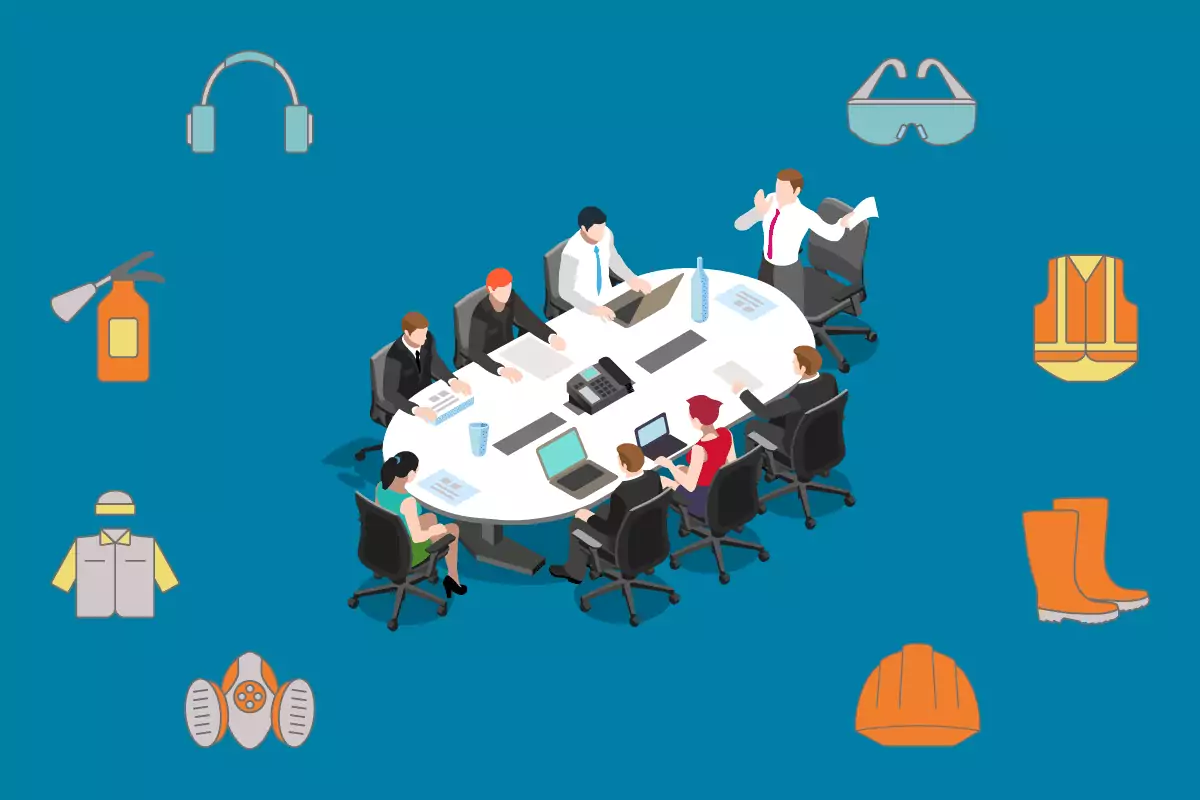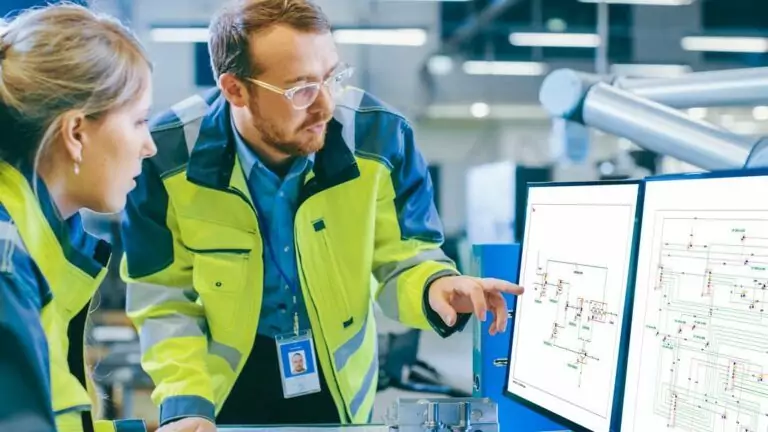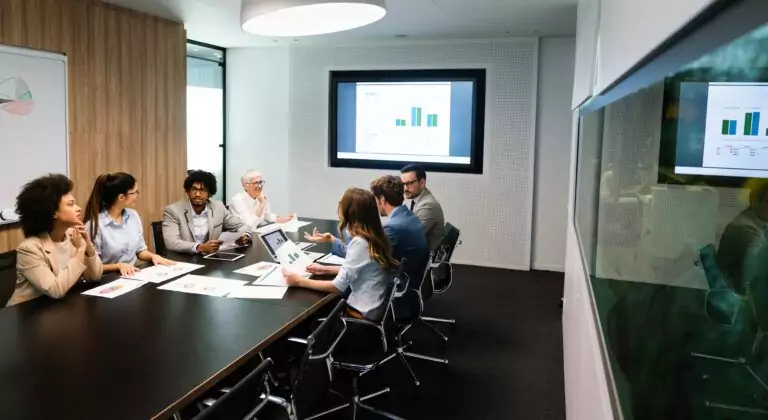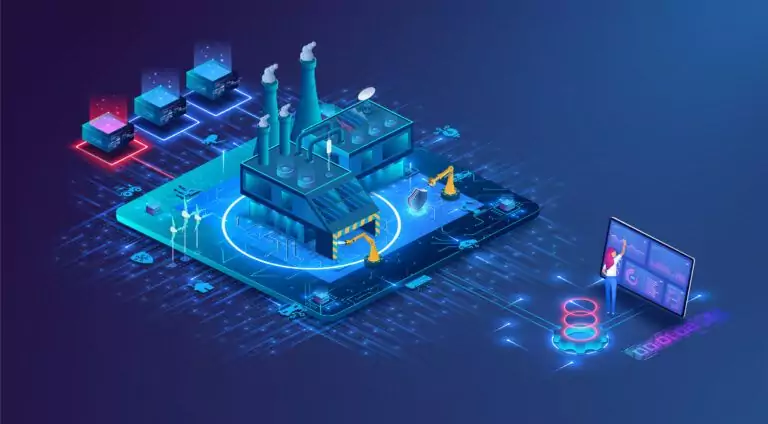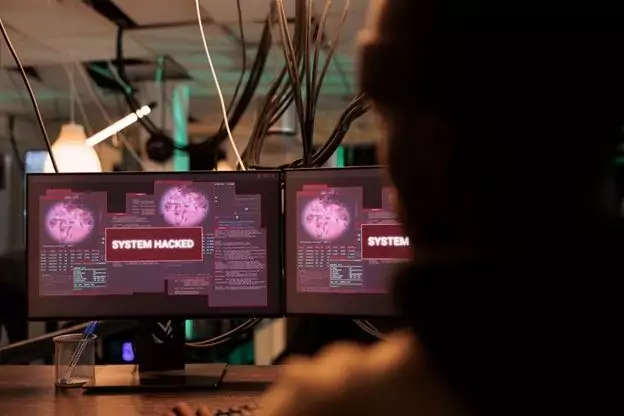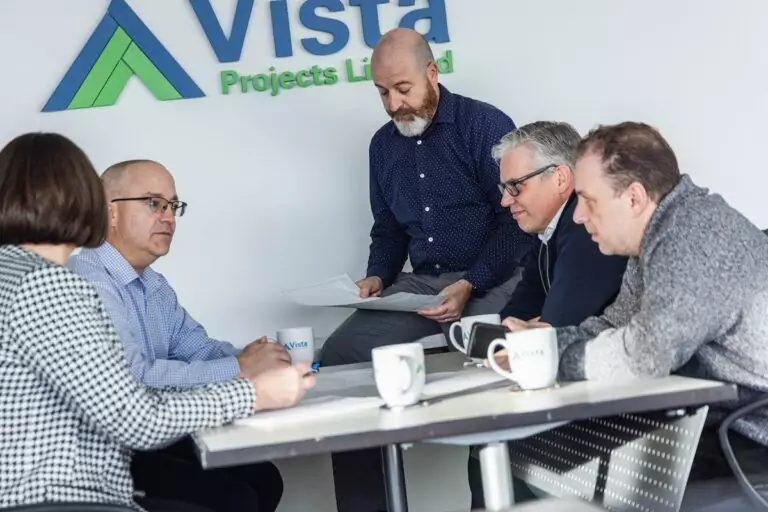Workplace safety moments, or toolbox talks, can cover a variety of topics. These are regular opportunities for coworkers to discuss safety issues at work, whether it’s dealing with workplace hazards or engaging in healthy work practices.
Safety talks are an important part of  cementing workers’ commitment to promoting a safety culture, both at the office and on hazardous job sites. A well-planned safety meeting:
cementing workers’ commitment to promoting a safety culture, both at the office and on hazardous job sites. A well-planned safety meeting:
- Informs people about workplace risks and safety training
- Gives the chance to evaluate prior safety-related incidents
- Keeps people alert and aware of potential hazards
Safety meeting topics can vary, from tips to avoid carpal tunnel to explaining company protocols around COVID-19. The important thing is that everyone in your organization is regularly thinking about safety. That is our goal as an engineering services firm and system integrator.
So, what are some good safety topics to incorporate in your meetings or talks around the toolbox? Here are 10 workplace health and safety topics to ensure your workforce is always focused on avoiding injuries or illnesses.
10 Everyday Workplace Safety Topics for Meetings
1. General Safety Mistakes
Proper use of personal protective equipment (PPE) is one of the simplest ways to ensure the safety of your employees. It’s crucial to advise and train employees in using protective equipment, such as prescription lenses, protective hearing devices, foot and arm protection, and other protective equipment.
For example, it’s wise to ask employees to wear hard hats if there’s a danger of falling objects in the workplace. Inform them about using face shields and gloves to prevent scratches, cuts, or possible infections.
2. Ergonomic and Workplace Stress
 Ergonomic stress can cause long-lasting and acute injuries. Employees should be aware of ergonomics risk factors in the workplace in order to avoid them. Repetitive tasks, overexertion, and sustained awkward postures can lead to lifetime injury or pain. Workers should regularly stretch, exercise, and do strength training to avoid ergonomically induced injuries.
Ergonomic stress can cause long-lasting and acute injuries. Employees should be aware of ergonomics risk factors in the workplace in order to avoid them. Repetitive tasks, overexertion, and sustained awkward postures can lead to lifetime injury or pain. Workers should regularly stretch, exercise, and do strength training to avoid ergonomically induced injuries.
Work-related stress, fatigue, depression, and anxiety also account for a large percentage of workplace health issues. Uneven workload patterns, toxic cultures, infrequent breaks, and many other factors can contribute to stress and discomfort. To reduce work-related stress, try to:
- Ask for help
- Communicate problems clearly
- Meditate and try other relaxation techniques
Creating a work culture that encourages conversations about stress and work-life balance promotes a healthy work environment.
3. Drugs on The Job
 Employees using drugs at work are far more likely to get injured. There are many harmful implications for using drugs while working. Examples include job turnover, loss of time, reduced alertness and productivity, unexplained absences, and increased vulnerability to accidents. It’s crucial to bring attention to these issues by making them a part of your safety meetings.
Employees using drugs at work are far more likely to get injured. There are many harmful implications for using drugs while working. Examples include job turnover, loss of time, reduced alertness and productivity, unexplained absences, and increased vulnerability to accidents. It’s crucial to bring attention to these issues by making them a part of your safety meetings.
4. Violence at The Workplace
Workplace or occupational violence can result from employees, customers, visitors, or clients engaging in any kind of disruptive behaviour.
This violence could include an act or threat of physical violence, harassment, intimidation, or even homicide. Safety meetings should address the policies and procedures organizations have in place to deal with violent acts on the job.

5. Fire and Electrical Safety
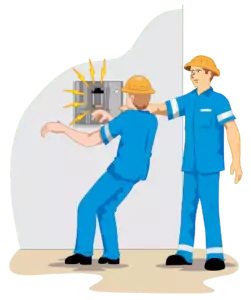 It’s good for employees to know what to do in the event of a fire accident at the workplace. Safety meetings present a chance to cover topics such as how to minimize the effects of fire, prevent the fire from spreading, and save lives. It’s also good for the workers to know:
It’s good for employees to know what to do in the event of a fire accident at the workplace. Safety meetings present a chance to cover topics such as how to minimize the effects of fire, prevent the fire from spreading, and save lives. It’s also good for the workers to know:
- The whereabouts of fire extinguishers
- How to use fire extinguishers
- Quick evacuation routes if/when necessary
Accidents caused by electricity can often be fatal. Knowing how to be careful with electrical equipment and devices at work is of the utmost importance. It’s vital for any safety meeting to discuss the consequences of not wearing proper protective gear while working with electrical wires or being careless around them.
6. Workplace Accidents: Reporting, Prevention, And Costs
 Accidents can result in a heavy financial cost to both the business and the workers involved.
Accidents can result in a heavy financial cost to both the business and the workers involved.
Talking about accidents is essential to every pre-work safety meeting. Employees should know how and why accidents happen at the workplace and what they can do to avoid them.
In case an accident does occur, workers should have adequate reporting procedures in place. A safety meeting is the best place to familiarize workers with workplace accident reporting procedures.
7. Heat Exhaustion and Safety
Heat exhaustion results from the body’s inability to cool down and regulate its internal temperature. It is usually caused by continuous exposure to excessive heat that dehydrates the body.
Symptoms of heat exhaustion include:
- Headache
- Fatigue
- Dizziness and fainting spells
- Nausea and vomiting
- Weak pulse
- Pale face
- Muscle cramps
Symptoms of heatstroke:
- Behavioural changes (irritability, confusion, disorientation)
- Seizures
- Nausea and vomiting
- Muscle and abdominal cramps
- Weakness
If left unattended, heat exhaustion can worsen and turn into heatstroke. Heat strokes have the potential to be life-threatening. It’s crucial to inform your employees about the signs, symptoms, and prevention of heatstroke.
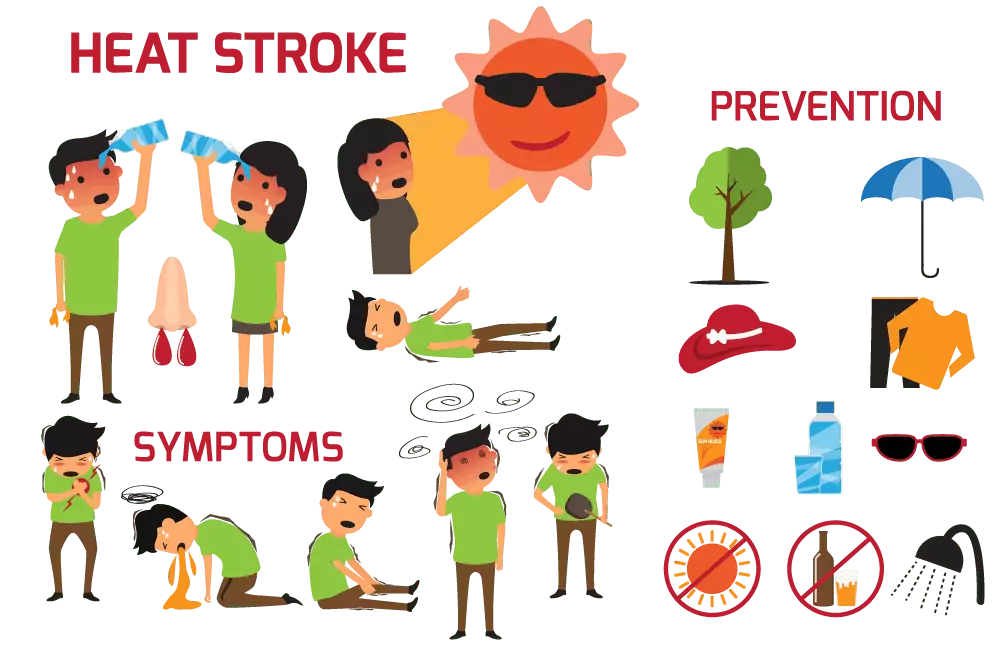
8. Workplace Injuries
 Accidents or injuries in the workplace can occur due to many reasons. Some of the most common causes are:
Accidents or injuries in the workplace can occur due to many reasons. Some of the most common causes are:
- Trips and falls
- Lifting
- Being hit by unguarded machinery or falling objects
- Violent acts in the workplace
- Stress, fatigue, and overexertion
- Vehicle-related mishaps
- Repetitive motion injuries
- Exposure to hazardous materials
Talking about how such injuries happen and what workers can do to avoid them should be a key element of a safety meeting. Organizations should inform workers on procedures and training that help protect them from accidents in the workplace.
9. Silica Dust and Protection
Prolonged exposure to particles of crystalline silica can lead to serious and fatal illnesses. Examples include chronic silicosis, interstitial lung disease, and even cancer. People who work in mining, steel, glass, and construction industries are more prone to silica-induced diseases.
It’s essential for these industries to hold safety meetings to discuss how workers can protect themselves from silica dust.
Some common materials that contain silica are:
- Cement and mortar
- Abrasives used for blasting
- Tiles and masonry
- Sand and granite
Some protective measures include:
- Dust control and suppression
- Exposure monitoring training
- Wearing PPE
- Banning smoking in areas where silica dust is present
10. Communication Issues and Safety
Lack of communication between employees can be a major reason for workplace accidents. Pre-work safety meetings, or toolbox talks, are a good platform to clarify the roles and responsibilities defined within a company’s safety program.
Occupational Health and Safety
Occupational safety and health are shared responsibilities. Both employers and employees have roles to play in maintaining a safe working environment. Meeting topics are a great way to communicate these responsibilities.
- Business owners are responsible for providing safe working conditions. This is typically achieved through the implementation of safety procedures. Employers must also have workers compensation insurance.
- Employees should know how work will be done for the day, who’s responsible for what, and the general safety protocols. In case verbal communication fails, people should have other effective means to communicate.
How to Effectively Communicate Workplace Safety Practices
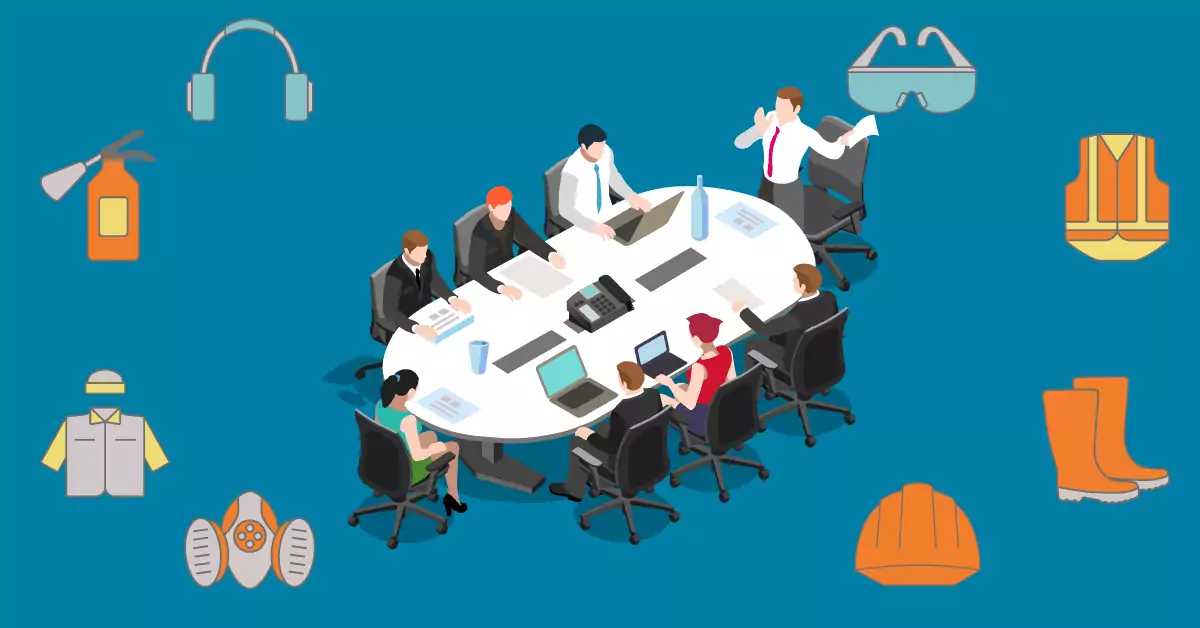 Communicating a pre-work or pre-meeting safety moment just for the sake of it is inefficient. Knowing how to share information about workplace risks and safety training is equally important, especially in the age of COVID-19 testing. This ensures workers and managers benefit from the time spent in workplace safety topics for meetings.
Communicating a pre-work or pre-meeting safety moment just for the sake of it is inefficient. Knowing how to share information about workplace risks and safety training is equally important, especially in the age of COVID-19 testing. This ensures workers and managers benefit from the time spent in workplace safety topics for meetings.
To run an effective workplace safety moment, try to:
- Engage your audience – A safety briefing, or moment at the start of a meeting, must be a two-way conversation between you and your workforce. Don’t talk at them; talk with them. Understand their concerns and give them a chance to ask questions.
- Not read manuals to them – Reading from a safety manual repels interest. It reflects your lack of preparation for a healthy and engaging discussion.
- Chalk out a time and place – It’s best to plan. Demonstrating what you are trying to teach works better, too.
- Discuss relevant safety issues – Don’t talk about topics that don’t apply to your work.
Safety and Industrial Engineering Consulting
As an industrial engineering consulting firm, safety is important to us at Vista Projects. Not only do we take every measure to keep our staff safe, we consider safety practices in our engineering designs. We believe safety in design is critical to the long-term viability of any facility. Sound safety practices also fit with our core values.
We believe all clients deserve:
- Transparency about projects and assets
- A collaborative problem-solving approach
- High-quality engineering designs
Simply put: the best interests of your project and asset are the focus of our multi-discipline engineering services. Contact us today to learn more.
